Alexander J. Motyl's Blog, page 11
December 4, 2014
Who Will Save the People of the Donbas?
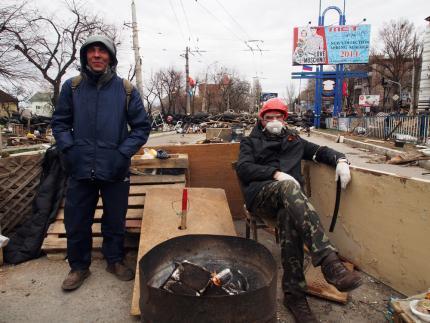
The answer, as is becoming increasingly obvious, is no one. Having ruined the economy of the Donbas enclave they occupy and caused a humanitarian catastrophe, neither Russia nor its terrorist proxies will come to the population’s rescue. Western powers reluctant to confront Vladimir Putin certainly aren’t going to open their wallets to the tune of billions of dollars. And Ukraine, which continues to proclaim that the territories are “temporarily occupied,” lacks the financial and military capacity to liberate the area. That leaves the enclave’s people isolated and, ultimately, completely dependent on themselves.
As many residents of the area now realize, the self-proclaimed leaders of the Donbas and Luhansk republics are more inclined to destroy than to create. As long as they’re around, the enclave will be unsalvageable, and it looks like they’ll be around for a while.
Russia has the money to make a difference, but it appears determined to let the population suffer. Putin enjoyed playing the role of the bull in the china shop. Now that the china is all broken, Putin should pick up the tab. He’s the guilty one, and he should atone for his crimes. He won’t, of course.
Andrei Kortunov, a liberal Russian international relations expert who may be privy to Kremlin debates, stated on November 25th that Russia has no intent to annex the enclave territories. Why?
First, it’s very expensive to incorporate them into Russia. Second, if you annex them, you have to assume responsibility for their future. But, as you know, these are very complex territories with many criminals and radicals who would pour into Russia and the Russian political space. I don’t think Russia is ready for that.
Kortunov is absolutely right. It would be senseless for Russia to annex that much trouble.
But so, too, would it be senseless for Ukraine.
Tetyana Chornovol, an investigative reporter who was savagely beaten by former President Viktor Yanukovych’s goons back on December 25, 2013, and is now a parliamentary deputy, agrees with Kortunov’s logic. “I believe,” she stated on November 26th, “that the occupied part of the Donbas must be separated from Ukraine. That’s the most optimal variant for the state.” Why? Because a long-term war means defeat for Ukraine. Chornovol would even cut off gas supplies to the enclave: “Why should we give gas to territories that Putin controls? Let Putin give them gas.”
The upshot of these two complementary, though competing, logics is a standoff. And a standoff means a “frozen conflict,” a territory that remains disputed and ruled by the insurgents. That’s the worst-case scenario for the proxies. Left to themselves, they’ll drive the Donbas enclave deeper into depression, hasten population flight, and stoke criminality and radicalism.
Kyiv appears to agree with Chornovol. Although no Ukrainian policymaker could say that “the occupied part of the Donbas must be separated from Ukraine,” Kyiv’s decisions to build an armed perimeter around the enclave, cut off subsidies to its governing agencies, curtail pensions and other social payouts, close down ATMs and mail service, reduce rail traffic to the area, and remove the region’s key universities to Ukraine all point to a withdrawal of Ukraine’s institutional presence from the enclave.
Who then will save the enclave’s population? Keep in mind that a significant portion does not wish to be saved, believing that the self-proclaimed republics are just fine. Some of these folks may change their minds as winter settles in and misrule becomes the order of the day. They may then join those who wait for liberation.
Unfortunately, their waiting will be in vain.
Putin’s victims will have to realize that only they can free themselves. Will they rise up against the illegal occupying forces? That’s the sixty-four thousand dollar question.
In the meantime, the enclave’s inevitable drift toward “frozen conflict” status has important implications for Kyiv. If it’s serious about ending the fighting and re-establishing semi-normal relations with Moscow, Kyiv will have to insist that the status of the enclave remain indefinitely frozen in any possible peace deal. Kyiv could give up its NATO aspirations—which will not be consummated in the foreseeable future anyway—and it could agree to eternal love of Russia, but if it agrees to take back the enclave, all hope for reform in a European Ukraine will be dead. And Putin knows it.
OG Image: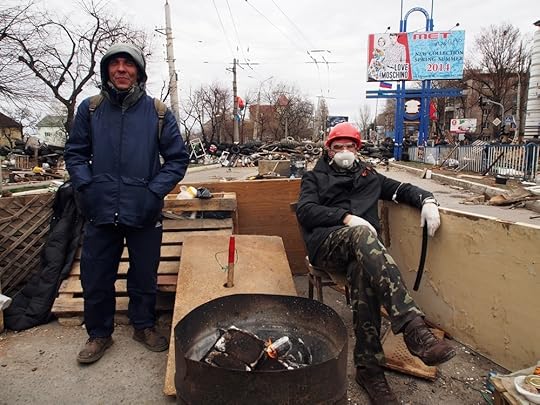 Europe and Central AsiaUkraineRussiaVladimir Putin
Europe and Central AsiaUkraineRussiaVladimir Putin
November 25, 2014
Time for a Hybrid War Against Russia?
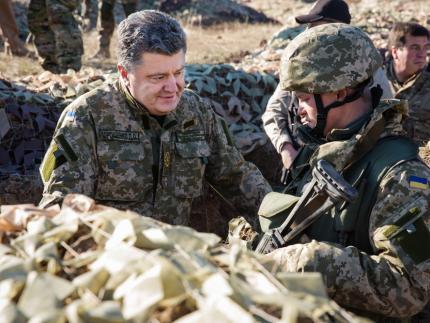
Should Ukraine embark on a “hybrid war” against the Donbas enclave controlled by Russia and its proxies? One of Ukraine’s best military analysts, Yuri Butusov, the Russian-speaking editor of the Censor.net website, effectively argues that the answer is yes.
Hybrid war is the term analysts apply to what many believe is Russia’s new way of war-making in southeastern Ukraine, one that employs a variety of means—propaganda, subversion, outright aggression, support for proxies, and the like—while remaining undeclared or denied.
Butusov believes that the recent G-20 summit in Australia confronted Russia’s illegitimately elected president, Vladimir Putin, with a “new reality of world politics” and “an anti-Putin front.” Butusov is therefore “99 percent certain” that Russia will refrain from attacking Ukraine, because Putin now understands that “any further escalation” will result in “new packets of sanctions much more quickly. And Russia is already paralyzed by the drop in world prices for raw materials.”
Moreover, Ukraine’s current focus on an exclusively defensive strategy isn’t sustainable in the long run. “We cannot,” writes Butusov, “construct rows of trenches and fill them with soldiers along the whole line of the front.” As a result, the Russian militants are always able to take the initiative, strike unexpectedly wherever they want to, and inflict casualties on the Ukrainian army. Such attrition is both demoralizing and destabilizing.
Butusov therefore suggests that Kyiv change its tactics—from playing defense to playing offense, but with “a scalpel.” Ukraine needs a “new concept of military activities.”
It is imperative that quick-response strike forces be created on the basis of existing formations and that systematic work be conducted toward liquidating the knots of resistance and the units of the adversary. Our defense should be proactive. The enemy should not remain in peace. We need a war of diversionary groups, howitzers and mortars, large armored units, and well-defended convoys.
In a word, Butusov is recommending that Ukraine adopt hit-and-run tactics against the Russian proxies, engage in surgical strikes against strategic targets, both on the front line and in the occupied Donbas, and thereby force the terrorists to dig in, anticipate, and lose the initiative. Ukraine’s offensive actions would therefore mirror Russia’s hybrid war. Ukrainian “little green men” and diversionary units would strike at vulnerable targets in the rear, while lightly armed commandoes enjoying the support of mobile artillery units would harass the Russians and their proxies along the whole length of the front.
Here are the two key elements of Butusov’s plan:
We can drive out the Russian Federation from the Donbas, but for that we need to conduct a genuine war—without flags, without PR, without advertising. Without any large attacks or maneuvers. Instead, locally, surgically, and fatally.
There should be one goal of the war: to inflict maximal casualties on the armies of the occupiers.
First, Kyiv would neither discuss what it is up to nor admit to having a Ukrainian military presence behind enemy lines. Like Moscow, Kyiv would adamantly insist that the attacks are being launched by local resistance to the proxies. Second, the goal of the offensive would not be to win back territory—at least not immediately—but to impose unacceptable casualties on Putin’s forces.
Would Butusov’s plan work? It’s obviously premised on the inability or unwillingness of Putin to launch a full-scale attack on Ukraine. If he does not or cannot, Ukraine’s hands are free. If he does, hit-and-run tactics may still be useful, but Ukraine’s primary task would then be to defend its territory. As I’ve written many times, we have no idea what Putin will or will not do. In that case, either you may agree with Butusov or you may not.
But there would be two ancillary advantages to Butusov’s strategy. First, localized strikes would not offer Russia the option of claiming that it must launch a full-scale attack in response to a Ukrainian offensive. Since Ukraine would purposely eschew “large attacks or maneuvers,” Russia would be placed in the same position Ukraine has been in for much of 2014: continually facing small-scale attacks that, individually, never quite merited a massive response.
Second, thanks to Kyiv’s cut-off of government subsidies, social unrest in the Donbas enclave has noticeably increased, with locals demanding that the proxies provide them with money and goods. The unrest is sure to intensify as the temperatures drop in the months ahead. Butusov’s plan would both build on and contribute to such unrest. Seen in this light, disrupting separatist rule behind the lines could turn out to be the best way of weakening separatist forces on the front lines.
OG Image: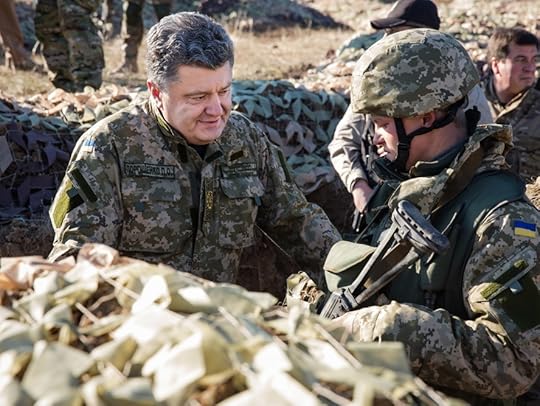 Europe and Central AsiaRussiaUkraineAustraliaVladimir PutinPetro PoroshenkoDonetsk
Europe and Central AsiaRussiaUkraineAustraliaVladimir PutinPetro PoroshenkoDonetsk
November 21, 2014
Does Ukraine’s Reform Plan Measure Up?
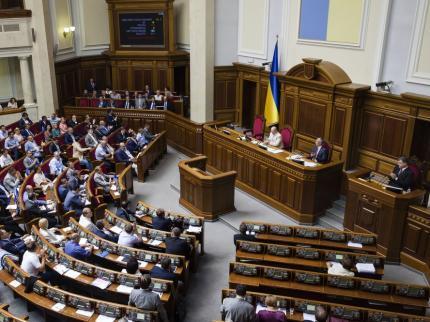
The reform plan of Ukraine’s coalition government-in-the-making has received mixed reviews from a team of Ukraine experts affiliated with the policy discussion website VoxUkraine.
We assign PASS to 3 sections out of 17, and CONDITIONAL PASS to 6 sections out of 17. We find that the draft does not have a coherent ideology and that many sections advocate Soviet style command economy approach to reforms, while only few sections address the structural causes of the problems in Ukraine.
The good news is that the team rates three of 17 sections as excellent, six as subject to improvement, five as “water” (or boilerplate), and only four as bad. That’s nine of 17 that are at least good enough. And those nine include law enforcement, national security, and energy independence (pass) as well as anticorruption, decentralization, regulation and competition policy, infrastructure and transportation, electoral reform, and ecology (conditional pass).
The bad news is that eight of 17 don’t pass muster, and, worse, these include such key sectors as judicial and financial reform (“water”) and agricultural, constitutional, and economic-growth reform (fail). If you believe that judicial reform underpins all the other reforms, then none of the reforms will take off without a fundamental restructuring of the courts. If, alternatively, you believe that economic growth is the sine qua non of many of the other reforms, then you’re likely to view the bad news as really, really bad.
Unlike the VoxUkraine team, Anders Aslund of the Washington-based Peterson Institute for International Economics believes the entire document is a disaster:
The draft coalition agreement even reminded me of reading Leonid Brezhnev’s speech at the 26th Party Congress of the Communist Party of the Soviet Union in 1981. This is not a reform program but an old-style bureaucratic Soviet document for the preservation of the old system. Such a conservative document will never bring reform. There is no declaration of will or strategy. The document does not even start with a set of goals but with a bureaucratic laundry list.
Aslund and VoxUkraine can’t both be right: the document cannot be both wholly conservative and partially reform-oriented. Their disagreement may be rooted in the fact that Aslund is assessing the document primarily from the economic point of view, while the VoxUkraine team looked at all its dimensions.
Be that as it may, political realists might interject by arguing that no (democratic) government ever adopts or promotes fully consistent reform programs or implements all its stated goals. Seen in this light, the fact that a coalition of five squabbling parties managed to produce a document that is more than half passable is quite an impressive achievement. And were Ukraine actually to introduce serious reforms in nine of 17 sectors, we should, once again, probably thank the gods.
My own sense is that, while many of the reforms do go together and need either to be passed simultaneously in order to work or depend on some one key sector to work, many are also discrete. I can agree that judicial and constitutional reform underpins anticorruption and electoral reform, but I’m not sure that building an effective army (national security) and constructing infrastructure and transportation depend (as much or at all) on good courts. America, for instance, became a regional power and expanded its railroads westward in the second half of the nineteenth century, and yet its courts were highly deficient. Which is only to say that much progress can probably be made in the nine areas that get a pass or conditional pass even without equal progress in the eight areas that fail.
There are two more upsides to the coalition document.
First, it’s an extensive list of all the reforms the coalition has in mind. As a result, it’s open to evaluation by such groups as the VoxUkraine team. Whether or not the governing coalition actually listens to criticism is another thing. But, at the very least, Western states and Ukrainian civil society will be able easily to monitor the government’s progress and make aid conditional on forward movement in neglected areas. As the VoxUkraine team says:
Interestingly, the best sections are those on Energy Independence, National Security, and Law Enforcement, which are the key areas for the survival of the sovereignty of Ukraine. Some other good areas are based on the EU directives (see ecology, e.g.). The less pressing areas offer a more depressing picture. This gives support to the argument that the change for the better in Ukraine can come only because of the external pressure to the state. The sections that are supposed to respond to domestic challenges such as social sphere, public utility services, and healthcare are low quality.
Second, the document assigns deadlines to the accomplishment of individual reforms. That, too, will enable Western states, experts such as Aslund, and Ukrainian citizens to keep track of government progress.
All in all, the coalition document has probably earned a conditional pass. That’s not great, compared to the ideal requirements of experts. Compared to what Ukraine’s previous governments have accomplished in the past 25 years, however, it may be borderline amazing.
And that may be the final bit of good news: Ukrainians now demand more of their government. Barely good enough just isn’t good enough anymore. You can thank the Orange Revolution and the Revolution of Dignity for that.
OG Image: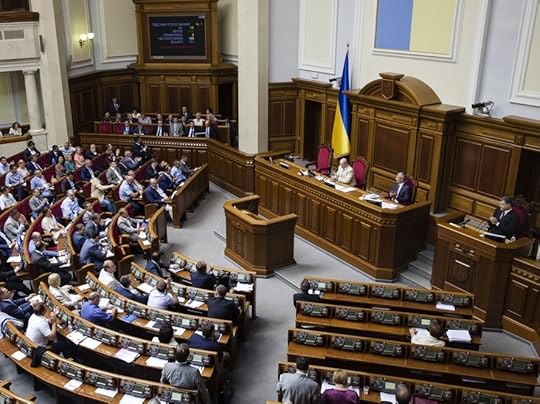 Europe and Central AsiaUkraineReformDemocracy
Europe and Central AsiaUkraineReformDemocracy
November 14, 2014
Kiev Cuts Subsidies to Separatist-Controlled Enclaves
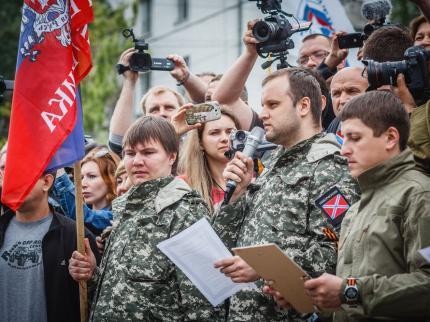
Even as Putin’s proxies in the Donbas enclave are preparing a major assault on the Ukrainian army, they are also evidently panicking. And all thanks to the Ukrainian government’s recent wise decision to stop funding enclave political institutions and providing pensions and other social benefits to enclave residents. All of sudden, the Russia-sponsored separatists appear to understand that the territory they control will soon become ungovernable.
Here’s the evidence. On November 12th, the press center of the so-called Donetsk People’s Republic (DNR) issued a statement supposedly crafted by the “society” of the DNR in which said “society” chides Kyiv for cutting off social payments “to our veterans, pensioners, invalids, and mothers,” all of whom are “citizens of [Kyiv’s own] country residing in the Donbas.”
One has to blush at the DNR’s chutzpah. First these Kremlin-sponsored thugs seize public buildings, intimidate and terrorize thousands of citizens, declare independence from Kyiv, stage bogus elections, establish a new government with themselves as its leaders in defiance of Ukrainian and international law, conduct a war against Ukraine, violate human rights, commit war crimes, shoot down an airliner, and threaten to attack Kyiv. Now they insist that they deserve funds from the very country they denounce as fascist and whose sovereignty they reject! Worse, the same individuals who deny the Holodomor of 1932–33, in which 3–4 million Ukrainians died in Stalin’s genocidal famine, call Kyiv’s withdrawal of subsidies to an avowedly enemy entity a “social genocide.”
The separatists are right to panic. No subsidies from Kyiv means no money for them and the people they pretend to govern. How will the proxies fund their terrorism? How will the civilians feed themselves? Might some DNR supporters soon have second thoughts about life under Putin’s proxies? Might work stoppages be ahead in the few enterprises that are still functioning? Does social unrest or resistance loom ahead? A November 12th press report described a deadly strike by pro-Ukrainian enclave partisans against a group of terrorists. If social, economic, and political conditions in the enclave worsen, might partisan activity increase?
There’s another reason for the panic. The enclave is an economic mess, having experienced dramatic drops in GDP and employment and rises in business closures, food shortages, and inflation. And conditions will get much, much worse as subzero winter temperatures envelop the enclave. People will die not only from the fighting, but also from hunger and cold. Even Nikolai Levchenko, the young Regionnaire hotshot from Donetsk who distinguished himself a few years ago by insulting the Ukrainian language, brazenly flaunting his ill-gotten wealth in Jakob Preuss’s documentary film The Other Chelsea, and preposterously claiming to have read Leo Tolstoy’s War and Peace seven times, says he’s worried: “More than 3.5 million people who have remained in the zone of direct conflict will suffer from the cold and will be placed on the verge of survival under conditions of a wintry humanitarian collapse.”
Recall that this same Levchenko’s supremacism and corruption made the terrorists and the looming humanitarian catastrophe in the Donbas enclave possible. His are crocodile tears. And he probably knows it, as his suggestion that both sides adopt a cease-fire reveals: after all, it’s precisely the separatist refusal to honor the cease-fire declared in Minsk in early September that has forced Kyiv to cut funding. And yet, the humanitarian problem Levchenko notes is real. I doubt that the proxies will be especially troubled if their citizens starve and freeze, but the enclave’s growing ungovernability will surely undermine their war effort. How do you conduct a war against the fascists in Kyiv if your home base is literally becoming a cold Somalia?
Putin and his proxies chose war, and their supporters in the West excused it. With war comes suffering—not only of the Ukrainian fascists, but also of the very population Putin, his proxies, and their Western supporters claimed to be liberating. There is no easy solution to the looming humanitarian disaster. The separatists and the Kremlin have had their way. As long as they maintain their control over the Donbas enclave, Ukraine will rightly refuse to support them—just as President Lincoln refused to negotiate with and support the secessionist Confederacy.
Continued war, and especially a full-scale terrorist attack on Ukraine, will make things even worse for the enclave’s population. Will Putin and his proxies subordinate their war-mongering to humanitarianism? Don’t bet on it. They are likely to push ahead. Blood and iron have become their self-justification—their raison d’être. The war will continue, and the innocents will die. And the West? The West will draw red lines and express “concern.”
OG Image: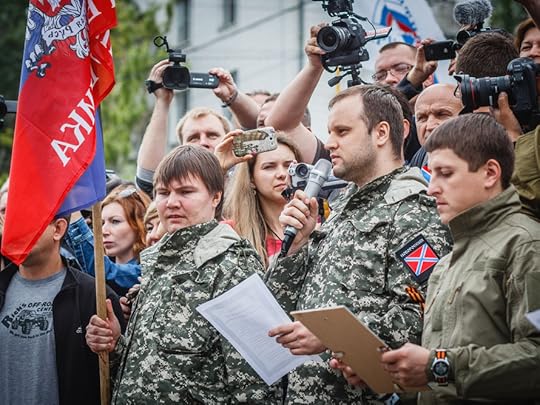 Europe and Central AsiaUkraineRussiaVladimir Putin
Europe and Central AsiaUkraineRussiaVladimir Putin
November 12, 2014
Ukraine’s Real and Unreal Elections
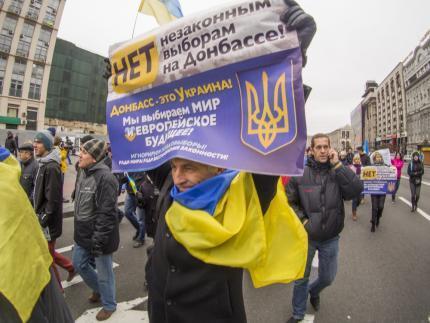
Ukraine recently witnessed one real election and one pseudo-election, but both may be turning points in the country’s history.
The real election, to the Rada (Ukraine’s Parliament in Kyiv), took place on October 26th; the pseudo-election, in the Donbas enclave occupied by Russia and its proxies, took place on November 2nd. The former was fair and free and, as a referendum on popular attitudes, produced a clear victory for pro-Western, pro-democratic, and pro-Ukrainian parties. The latter was a staged event overseen by thugs with guns that, unsurprisingly, produced a clear victory for the pro-Russian thugs with guns.
The online newspaper Ukrainska Pravda conveniently broke down electoral outcomes by province according to their pro-European and pro-Russian tendencies. Importantly, every single Ukrainian province—including all those in the southeast (Odessa, Mykolaiv, Kherson, Zaporizhzhya, Dnipropetrovsk, Kyiv-controlled Donetsk and Luhansk, and Kharkiv)—had more pro-European votes than pro-Russian votes. These were also the regions where the pro-Russian parties did best, but, no less importantly, their best was a far cry from what it had been in the parliamentary elections of 2012. In a word, a political sea change—toward the West, democracy, and Ukraine, and away from everything Russia stands for—appears to have taken place in Ukraine’s southeast.
A closer look at the figures will bear out these conclusions. I calculated for each of the southeastern provinces the percentage increase of the pro-European vote and the percentage decrease of the pro-Russian vote. Here are the results: Odessa (+61 percent, –37 percent); Mykolaiv (+82 percent, –47 percent); Kherson (+68 percent, –53 percent); Zaporizhzhya (+74 percent, –37 percent); Dnipropetrovsk (+63 percent, –40 percent); Donetsk (+264%, –33 percent); Luhansk (+245 percent, –30 percent); Kharkiv (+47 percent, –29 percent). These are impressive trends. Just how impressive is clear from a comparison with the same percentages for three regions where the pro-Europeans did exceptionally well: Lviv Province (+7 percent, –71 percent), Kyiv city (+16 percent, –60 percent), and Poltava Province (+42 percent, –66 percent). Since these three are already very pro-European, they have less room for improvement than the southeast. But if current trends in the southeast continue, it should be making leaps and bounds and catch up within a decade or so. Not bad for a region that is still considered unremittingly pro-Russian and pro-Soviet by clueless Western “experts.”
In contrast to these elections, the ballot in the Donbas enclave tells us nothing about popular preferences. Its importance lies elsewhere. Clearly, the Russian proxies who control the territory are determined to acquire as much independence as they can and to do so regardless of international agreements and norms. That’s no surprise, of course, as they’ve flouted all civilized norms ever since they appeared in the spring of 2014. What’s new is that no one, anywhere, can still harbor any illusions about their intentions. They will stay in the enclave until they are driven out. Indeed, they may even want to expand their sphere of influence by attacking Ukraine. Although they say they want to negotiate with Kyiv, their indifference to dialogue, their commitment to violence, and their predilection for creating faits accomplis demonstrate that there is nothing to talk about with them. Ironically, even Russia’s illegitimately elected ruler, Vladimir Putin, may have come to a similar conclusion, having pointedly refrained from recognizing the elections or from holding talks with the terrorists.
Kyiv, correctly, revoked the autonomous status it granted the enclave as part of the Minsk agreement of September 5th. Prime Minister Arseniy Yatsenyuk also announced that Ukraine would cease providing the enclave with subsidies amounting to some 34.2 billion hryvnia (about $2.3 billion). At the same time, Yatseniuk also noted that gas and electricity would continue to be provided to the enclave—gratis.
Kyiv faces a dilemma. The enclave has declared independence from Ukraine and is waging a bloody war against Ukrainian troops. It’s quite possible that the Russian proxies may soon launch a large-scale offensive against Ukrainian positions in the Donbas and, possibly, elsewhere. At the same time, in providing billions of hryvnia to the enclave’s (oftentimes anti-Ukrainian) government institutions (as well as non-functioning coal mines!), not to mention free gas and electricity, Ukraine is effectively subsidizing the very terrorists it claims to be opposing. Kyiv would say it has an obligation to keep its citizens in the enclave warm. True. But it also has an obligation to keep its citizens outside the enclave safe. So which is the greater priority: the security and survival of a huge country with some 40 million people or the warmth of a small Russian-controlled enclave with some 4 million? At the very least, Kyiv could insist that some dummy entity in the enclave pay Ukraine the exact same price for the gas that it’s agreed to pay Russia—$385 per 1,000 cubic meters.
The terrorists may soon make that question moot. If, as seems likely to an increasingly large number of sober Ukrainian analysts, they attack Ukraine, and if, as also seems likely, Russian artillery and bombers rain destruction on Ukrainian soldiers and civilians, Kyiv’s hand will be forced and the subsidies will likely cease. The result of Putin’s continued aggression cannot be foretold, but you can be certain that the tens of thousands of dead Ukrainians and Russians (one Russian analyst estimates that 35,000 Russians would die in a war against Ukraine) will unfortunately give Russia’s cruel dictator few sleepless nights.
OG Image:
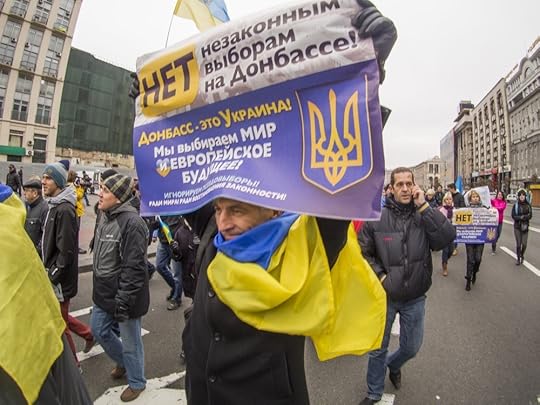 Europe and Central AsiaUkraineRussia
Europe and Central AsiaUkraineRussia
November 7, 2014
Is Russia Artificial?
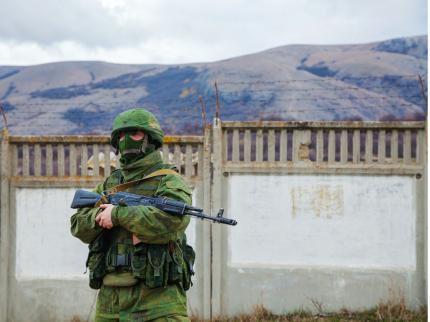
Most people would unthinkingly answer: of course not! Just look at all the Russians inside and outside Russia. Just look at the Russian state. They’re real, aren’t they? They’re organic. How could one possibly suggest Russia might be artificial?
If you subscribe to these views, take a deep breath and hold on to your seat. The fact is that the Russian state is completely artificial, while the Russian nation is completely fragmented. Both are historically contingent. They’re as real—or unreal—as any non-Russian nation or state or as any recently constructed post-colonial state.
Whether or not Russia is artificial matters because Vladimir Putin and his Western apologists justify Russia’s aggression against Ukraine in terms of Ukraine’s supposed artificiality. The larger principle they’re invoking is that “artificial entities may be dismembered.” That principle is dangerous nonsense. No less important, if applied consistently, it leads to Russia’s dismemberment.
On October 24th, Putin told the Valdai Club that “Ukraine is a fairly compound state formation,” apparently comparing Ukraine to a compound sentence consisting of two or more clauses joined by a conjunction. “The history of Ukraine’s formation in its current borders is a rather complex process.” He then invoked the inclusion of supposedly Russian territories in Soviet Ukraine in 1922, the addition of western Ukraine after World War II, and Khrushchev’s “illegal” transfer of Crimea from Russia to Ukraine in 1954.
Putin’s ignorance of history is alarming. Back in 1922, when the Soviet republics were being formed, Soviet Russia was created on the basis of imperial Russia’s former boundaries and not on the basis of some ethnic majoritarian principle. Western Ukraine’s annexation to Soviet Ukraine was the result of Soviet imperial expansion, but it involved the transfer of territories that were largely ethnically Ukrainian. In any case, there were lots of fairly significant border adjustments—think of Germany and Poland—in the aftermath of the war, and only Nazi revisionists would find them disturbing. Finally, Khrushchev did not seize the Crimea and “give” it to Soviet Ukraine. The transfer, like so many other Soviet border adjustments, was sanctioned by the USSR Supreme Soviet and was as legal—or illegal—as anything the Soviets did.
So forget Putin’s twisted invocation of Soviet history. Was Ukraine’s state formation, as Putin implies, more complex than Russia’s? Take a look at any map of Muscovy’s expansion from a tiny statelet in the 14th century to the Russian Federation of today. There was nothing simple or natural or preordained about the process. Successive Muscovite princes and czars fought incessant wars, killed foreign peoples, destroyed foreign cultures, and seized foreign territories. Today’s Russia is the “compound” product of relentless imperial expansion, war, and destruction.
Unsurprisingly, today’s Russia consists of 27 regions (republics, districts, and provinces) that have the status of autonomous non-Russian political entities. That’s 32 percent of the total number of regions, and about 40 percent of the Russian Federation’s territory. According to Putin’s logic, each of these units has the right—and obligation—to secede from Russia.
Things get even worse when one takes a closer look at the Russian “nation.” The Russian state, though artificial, at least exists. But is there anything resembling a coherent Russian nation? Don’t be so certain that the answer is yes. For one thing, Russians aren’t sure whether they’re rossianie or russkie. English makes no difference between these two designations, but, as the rough equivalent of British vs. English, they stand for very different self-perceptions. For another, there are vast differences, in mentality, history, identity, and language, between—just to take three examples—European Russians centered on St. Petersburg and Moscow and those Russians living in Siberia, the Far East, and southern Russia. Siberian Russians have an identity as sibiryaks. Far Eastern Russians resent the intrusiveness of Moscow. Southern Russians sound more like Ukrainians—substituting H for G—than Muscovites and Petersburgers.
Things get even more complicated when one looks at Russian attitudes toward their history. Some Russians view Soviet history as Russian history and the Soviet Union as a Russian state. Others violently disagree with what they consider to be a Soviet deformation of true Russian values. Some Russians view themselves as Western, others as Asian, still others as Eurasian. Most Russians trace the history of their state to Kyivan (Kievan) Rus, the huge polity that dominated Eastern Europe in the 9th–13th centuries, but there is as much continuity between Rus and Muscovy as there is between ancient Rome and Romania. Rus was established by Viking marauders who settled among the Slavic tribes near Kyiv. Muscovy was the product of Muscovite elites and Finno-Ugric tribes. Rus was destroyed by the Golden Horde; Muscovy was promoted by the Golden Horde. At Rus’s heyday, Moscow was a tiny village. At Muscovy’s heyday, Rus no longer existed. In time, imperial Russia developed the myth of its continuity with Kyivan Rus and insisted that Kyiv (Kiev) was “the mother of Russian cities.” The rulers of early Muscovy saw no continuity with Kyiv, so much so that no Muscovite prince or Russian czar has ever borne the name of a Rus grand prince. Contrast that with any other European dynasty and their innumerable Henry’s, Louis’s, and Otto’s.
In a word, the Russian nation is as artificial as the Russian state. Should both therefore be dismembered—say, by the Chechens, Bashkirs, Yakuts, Tatars, Ukrainians, and Chinese? Should Germany lay claim to Kaliningrad (the former Königsberg)? Should the Crimean Tatars—or perhaps even the Turks—claim the Crimea and boot out the Russians? Should the Kazakhs drive out the Russians in the north of their country? If you believe Putin, then the answer has to be yes. If you’re a rational policymaker or decent human being who suspects that endless border adjustments are a recipe for incessant wars, you may decide that the answer is no. After all, the bottom line is that all nations and all states are artificial historical constructs.
Either way, the issue may be moot. Having opened a Pandora’s Box of territorial revisions, Putin may have dealt a death blow to the artificial Russian state and fragmented Russian nation. In the years ahead, expect the Russian Federation’s many nations, autonomous regions, and large neighbors to test Putin’s commitment to state dismemberment.
OG Image: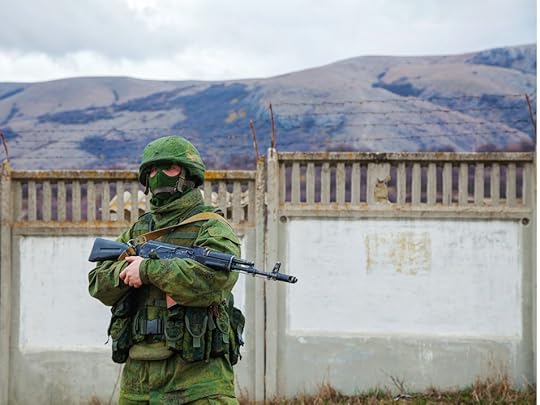 Europe and Central AsiaRussiaUkraineVladimir Putin
Europe and Central AsiaRussiaUkraineVladimir Putin
November 4, 2014
Ukraine's Commitment to Values Ensures Its Independence
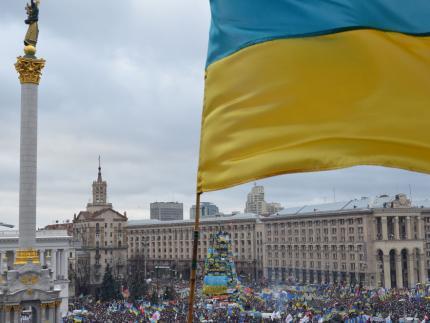
At the moment, Russia has lots of hard power and very little soft power, while Ukraine has lots of soft power and little hard power. Russia’s determination to exclude soft power will ultimately be suicidal. In contrast, Ukraine’s future is bright, but only if it manages to hold on to its soft power while building up its reserves of hard power.
Power is generally understood as the capacity to induce others to do your bidding. The central components of hard power—armies and economies—either coerce others to bow to your will (by force or the threat of economic sanctions) or encourage them to accept it (by the promise of economic rewards). Soft power, a fuzzy concept first developed by Harvard University’s Joseph Nye, is about your attractiveness and the attractiveness of your policy goals. Realist international relations analysts who live in a world of money and bombs don’t quite know what to do with soft power thus defined, but its utility is obvious to any other political scientist or analyst. If other countries view you as worthy of emulation, respect, and trust, you’ll need to expend far less hard power to get them to do your bidding. They’ll want to be on your side. By the same token, if other countries view your policy goals as attractive—to them, that is—you’ll also need to expend less hard power to get them to do your bidding. Once again, they’ll want to be on your side—not because they “like” you, but because they view your behavior as reassuring and your policy goals as advantageous. In a word, soft power is cheaper than hard power.
These considerations matter, both domestically and internationally, since all states have limited amounts of resources. Machiavelli suggested that it’s better for a prince to be feared then to be loved, but that may be true only if the prince is absolutely certain that he has and always will have the requisite means to induce fear and suppress rebellion. You can’t be a great power without hard power, but you can’t be a great power for long without soft power. The European Union has tons of soft power, but little hard power: it is, as a result, no great power. The United States is a superpower that recently squandered much of its soft power: it’s still a great power, but it’s clearly struggling, as the hard-power costs of remaining a great power have grown relative to its diminished soft-power reserves.
Back in 1991, Russia had lost most of its hard power, while possessing, as a new democracy committed to joining the international community, a fair amount of soft power. Under Putin, Russia’s reserves of hard power have grown considerably; its soft power probably peaked during the 2014 Winter Olympics. Since invading Ukraine, Russia’s soft power has pretty much evaporated: no one, except perhaps for North Korea, admires Russia, and no one, except perhaps for Western European neo-fascists and American leftists, shares Putin’s policy goals or is persuaded by his propaganda. For much of the world, Russia has become a rogue state.
The United States got into trouble in Iraq and Afghanistan, even though its economy and military were significantly larger than Russia’s and its soft-power attractiveness as a “beacon of democracy” and the site of the “American dream” has always been, and remains, strong. Putin’s Russia is slated for far greater trouble, possibly even collapse, especially as it’s decided to take on the entire developed world. Putin must now hope to compel compliance with a military that is no match for America’s, China’s, Britain’s, France’s, and Turkey’s and with a petro-state economy that is comparatively small and doomed to secular decline for the foreseeable future. You don’t need to be a realist geostrategist to see that this is a losing proposition. A country with relatively modest reserves of hard power such as Russia can only throw its weight around if it begins to experience phenomenal economic growth rates (which, as a corrupt petro-state, it can’t and won’t) or if it decides to build up its reserves of soft power (which Putin has precluded). Most states and most policymakers realize that Russia is acting like a bully; most also know that its chest-beating is mostly unsustainable bluster. What looks like success is just the shock felt by Europeans and Americans at the brutish stupidity of Russian policymakers.
Contrast Russia with Ukraine. Ukraine’s people elicit admiration from much of the world; their dedication to freedom and democracy and their government’s commitment to democratic procedure and human rights draw accolades from the international community. Its policy goals—independence, stability, security, integration with the West and the world—are shared by many other countries. Ukraine arguably has never had this much soft power in the 24 years of its independent existence.
Hard power is another thing. The army and economy are a mess. But the former is improving, while the latter may be on the verge of a major breakthrough if the pro-reform president, parliament, and government adopt the radical reforms they say they will adopt. The challenge before Ukraine is to pull off radical reform and still remain attractive. That means following in the footsteps of the Baltic states, Poland, and other East Central European countries. The precedent is there. The Poroshenko-Yatseniuk government need only mimic its western neighbors. But the West has an important stopgap role to play, too. The United States and the European Union—along with the International Monetary Fund and the World Bank—must increase Ukraine’s reserves of hard power in the short term. And that means military assistance and financial aid, preferably of a massive kind, to enable Ukraine to make that great leap forward toward democracy, rule of law, and the market.
If Ukraine succeeds—and all indicators suggest that it will—watch its relationship with Russia change. Russia’s bullying will only dry up its hard-power reserves. Sooner or later, it’ll degenerate to the level of a North Korea—an impoverished pariah state with lots of guns and bombs. With some luck and Western assistance, Ukraine could become the next Poland
OG Image: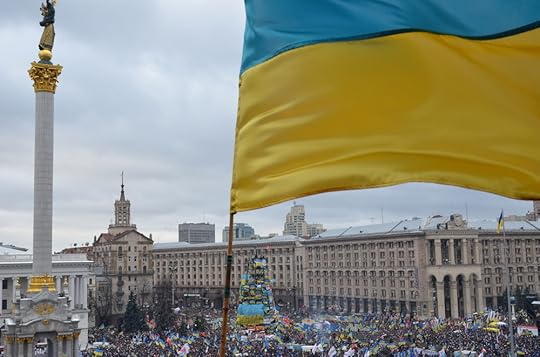 Europe and Central AsiaUkraineRussia
Europe and Central AsiaUkraineRussia
October 24, 2014
Leave Putin His Scraps
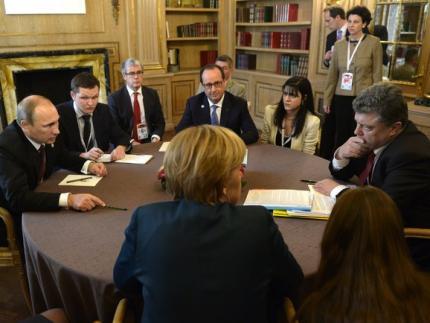
Would territorial retreats whet Vladimir Putin’s imperialist appetite?
I’d be rich if I had a hryvnia for every time I’ve heard that question answered in the affirmative. Accordingly, if one concedes an inch to Putin, he’ll take a mile. And, naturally, that mile will only be the prelude to many more miles. In sum, you can’t concede an inch—or else.
Critics of Ukrainian President Petro Poroshenko’s “peace plan” for the Donbas enclave controlled by Russia and its terrorist proxies generally make this argument. Providing the enclave with a special status and effectively conceding Russian control of the territory isn’t just a “capitulation.” It’s an invitation to further Russian aggression.
Let’s unpack the arguments for inches becoming miles.
Supporters of this view—let’s call them pessimists— generally assume several things. First, that Putin desires to grab all of Ukraine and as much of Europe as he can. Second, that every territorial concession is a valued prize for Putin. Third, that Putin has the capacity to absorb enormous amounts of territory. Fourth, that Ukraine and other target countries have no influence on Putin’s appetite. And fifth, that Putin is immune to pain in his quest for empire. Let’s call the people who question some or all of these assumptions optimists.
The first assumption gets at the question that’s been obsessing analysts for years: just what the heck does Putin want? If you’re an optimist, you’re likely to believe that Putin wants hegemony over Ukraine and glory for Russia. If you’re a pessimist, you probably think Putin, like his ideological twins Aleksandr Dugin and Vladimir Zhirinovsky, wants to capture Lisbon and nuke Tallinn. I submit that this question is unanswerable. We just don’t know, and we can’t even be sure that Putin knows. That said, given the stakes, we would be wise to agree with pessimists and assume the worst.
The second assumption rests on the view that all territorial acquisitions are equally valuable and, hence, equally desirable. But that’s obviously false. Imperialists generally want prize real estate and eschew barren deserts. Seen in this light, neither the Crimea nor the Donbas enclave is much of a prize: the former is turning into an economic mess, the latter has been reduced to a hell hole by Russian predations. True, both regions represent gains for Putin inasmuch as they are (still) home (sort of) to ethnic Russians supposedly pining for annexation to Russia. On the other hand, any further move into Ukraine will entail more destruction and increasingly fewer Russian “piners,” with the value of additional real estate thereby falling accordingly.
The third assumption rests on the view that seizing territory is easy. But, pace the ease of the Crimean annexation, most annexations are, like the Donbas annexation, extremely messy affairs, entailing military campaigns, human losses, economic distress, and enormous financial costs. And then there’s the problem of administering the occupied territories. For one thing, the occupier must eliminate the inevitable resistance. For another, the occupier must divert resources from the homeland to the occupied territories. Does Putin really want to be fighting Estonian, Latvian, Lithuanian, Polish, Ukrainian, and many other partisan movements—and thereby repeat the bloody experience the USSR had with these nations after World War II?
The fourth assumption rests on the view that countries willing to make territorial adjustments will always accede to countries insisting on territorial adjustments. But why should they? As the above paragraph suggested, a further invasion of Ukraine or Eastern Europe will definitely produce resistance. If so, why shouldn’t potential invadees do everything possible to prevent invasions? Such as build defensive fortifications, arm and train their armies, and develop alliances? And why shouldn’t those defensive measures suffice to prevent expansionist countries from taking additional territory?
The answer to that last question leads straight into the fifth assumption: that Putin is immune to pain. According to pessimists, Putin will keep advancing regardless of the losses Russia incurs in his march to the Atlantic. How likely is that? If Russia suffers enormous pain, it may become objectively incapable of marching to Lisbon, even if Putin wants it to. (Remember that Hitler’s will proved powerless to stop Nazi Germany’s defeat.) And how likely is Putin to remain unaffected by Russia’s pain? If he’s completely bonkers, the answer is completely. If he has a twinge of rationality in him, then, sooner or later, the pain will make a difference in his calculations—not because he’s a humanitarian, but because he’ll see that a weak Russia will never reach Lisbon.
These are not just abstract reflections. They concern the Crimea, the Donbas enclave, and perhaps more of Ukraine. It is probably true that the ease of Russia’s conquest of the Crimea led Putin to believe that he could just as easily take another bite out of Ukraine. But the Donbas war has been anything but a cakewalk for Russia and its terrorist proxies. Ukraine has fought back and stopped the Russian advance. “The result,” according to Russian analyst Konstantin Gaaze, “was a dirty, bloody tie.”
Will Putin’s experience in the Donbas further whet his appetite or will it curb it? Three of the above five assumptions don’t hold for the Donbas enclave: the territory is no prize, the Ukrainians have fought hard, and Putin has paid a high price. Will the pain associated with these factors influence Putin? If he’s rational, yes. If he’s irrational, then Lisbon better prepare for a Russian assault.
But the really important question is this: Will Putin be emboldened if Ukraine accepts the enclave’s frozen status and uses the breather to build fortifications, reform its army, strengthen its arsenal, and enhance its ability to inflict pain on Russian invaders? I don’t see how those actions could possibly increase Putin’s appetite. They may not dull it—if he’s irrational—but even then, an objectively improved defense could stop Putin even if he believes otherwise. On the other hand, if absolutely nothing can stop Putin, then Europe and Russia are doomed, regardless of whether territorial retreats whet his imperialist appetite or not.
What, then, are the implications for rational policymakers? That’s easy. Regardless of whether you’re an optimist or a pessimist, the mere possibility of Putin’s unleashing a war against European civilization should be enough for rational European policymakers to appreciate that stopping Putin in the Donbas is infinitely preferable to stopping him farther west.
Photo Credit: www.kremlin.ru
OG Image: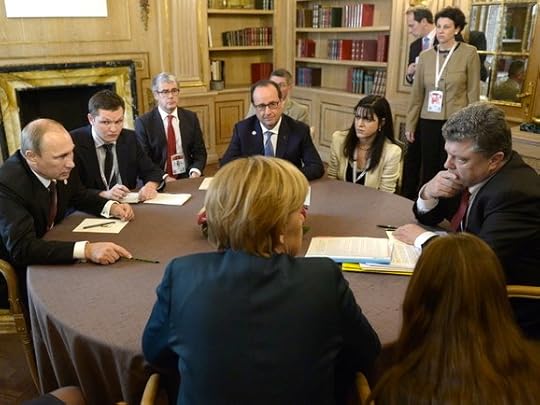 Europe and Central AsiaRussiaUkraineVladimir PutinPetro Poroshenko
Europe and Central AsiaRussiaUkraineVladimir PutinPetro Poroshenko
October 21, 2014
Ukraine Should Abandon the Donbas Enclave
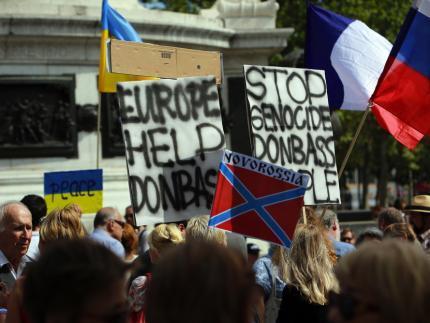
Ukraine has two nonnegotiable priorities in its ongoing war with Russia: survival and reform. Ukraine must survive as a sovereign democratic state in the short term if it is to reform, and it must reform itself in the medium term in order to survive and become a prosperous and secure sovereign democratic state in the long term. Both goals can be best advanced if Ukraine washes its hands of the enclave of the Donbas region that Russia and its proxies now control.
Europe’s foremost priority is inextricably connected to Ukraine’s. Europe’s two key pillars—the European Union and the North Atlantic Treaty Organization—must survive as effective institutions, but they can do so only if Ukraine survives and reforms. If Ukraine, a geopolitically pivotal country in the heart of Europe, falls to Russia or becomes a European Zimbabwe, Europe will be hard-pressed to remain functional, prosperous, and stable.
Ukraine’s priorities are, therefore, Europe’s—and by extension America’s. The only difference—and the only source of policy disagreement—is on the time frame. Ukraine needs to survive immediately, and it must reform itself as soon as possible. If it fails to do so, Europe’s survival will come into question, but only in time—a prospect that enables some Europeans to hope that things will somehow work themselves out in the future.
Ukraine’s survival is predicated on one simple goal: stopping Putin.
Stopping Putin means two things. First, the West cannot abate its sanctions or recognize Russia’s illegal occupation of the Crimea and the Donbas. If sanctions are rolled back and the occupations are deemed legal, Putin will be told that imperialism pays. No one knows what he wants, but it’s clear that his minimal goal is to keep Ukraine unstable, poor, and on the verge of collapse. His maximal goal may be all of Ukraine or, as he told Ukraine’s President Petro Poroshenko, “If I want to, Russian troops can be not only in Kyiv in two days, but also in Riga, Vilnius, Tallinn, Warsaw, or Bucharest.”
Second, Ukraine must have the defensive capacity to deter a further Russian invasion. Kyiv has already adopted a plan to build extensive fortifications along its border with Russia and the Donbas enclave. Ukraine must now do everything possible—preferably with Western help—to strengthen its army and acquire the force structure it needs to stop Russian tanks and aircraft. Since vast amounts of Western military assistance are unlikely, the burden of security will fall on Ukraine, which will be able to sustain it only if its economy begins to grow briskly.
Ukraine’s adoption of painful systemic reforms requires political will on the part of the political elite, a willingness by the population to endure hardship, and a clear road map. For the first time since independence in 1991, all three components are in place. The post-Maidan democrats understand that reform is unavoidable; the vast majority of Ukrainians want change and know that reform can make life only marginally worse; and the EU Association Agreement provides Ukraine with a clear vision of the concrete steps it must take.
But systemic reform will be next to impossible if Kyiv’s attention and resources remain focused on the Donbas enclave. Under the worst-case scenario, if fighting continues or intensifies, increasingly scarce resources will flow eastward and reform will be delayed until peace finally comes. Under the best-case scenario, if some form of peace arrives and holds, while Kyiv continues to devote its attention to integrating and, ultimately, financing the reconstruction of the region, reforms will be tabled because the Donbas enclave will, as Putin knows, obstruct westward-oriented change and promote Russian influence in Ukraine’s internal affairs.
The enclave’s population has been and may still be unremittingly anti-Ukrainian and anti-Western. Its elites—whether the old guard in the Party of Regions and the Communist Party or the new guard in the self-styled Donetsk and Luhansk People’s Republics—are political and economic reactionaries. The enclave’s chief oligarch and corruptioneer, Rinat Akhmetov, is still uncertain about his loyalty to Kyiv. And the enormous economic and human destruction wrought by Russia and its proxies will require massive amounts of subsidies that Kyiv can obtain only by raiding the coffers of Ukraine’s other provinces.
In sum, reintegrating the Donbas enclave into Ukraine will retard and prevent reform and, thus, undermine Ukraine’s survival. In contrast, keeping it at arm’s length will free Ukraine to pursue reform and consolidate its sovereignty.
There are several ways in which “keeping it at arm’s length” may be interpreted. Ukraine could cut the enclave loose and tell it to determine its own future. It could, as Poroshenko’s current peace plan does, grant them a special status within Ukraine that effectively amounts to independence, especially if Russia’s proxies run the enclave. Or Ukraine could “freeze” the status quo, turn inward and westward, and “wash its hands” of the region.
Whatever Ukraine’s choice, it—and the West—must understand that their future ultimately hinges on what happens to the enclave. The Donbas was probably the single most important obstacle to Ukraine’s adoption of reforms in the last 23 years. It would be a tragedy if, through Kyiv’s and the West’s unwillingness to recognize Ukraine’s priorities, the enclave continued to play this dubious role in the future.
OG Image: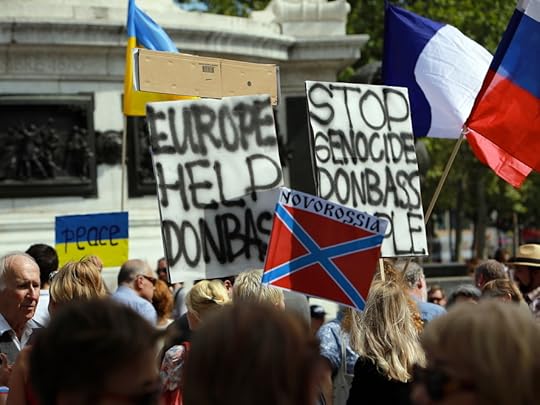 Europe and Central AsiaUkraineRussia
Europe and Central AsiaUkraineRussia
October 17, 2014
Ukraine Must Reform to Save Itself
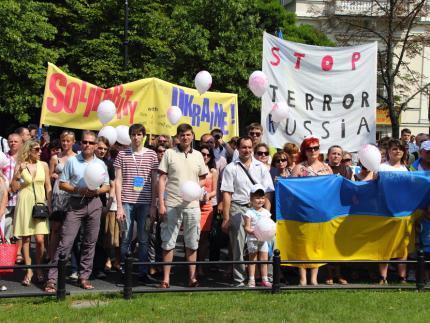
Will NATO Save Ukraine from Russia? I’m surprised by how many people, especially in Ukraine, believe the answer is yes. And I’m no less surprised by how many Western analysts and Russian policymakers claim that that’s exactly what NATO hopes to do—and, by implication, will do. Naturally, Russians describe NATO’s presumed intentions as offensive and not defensive.
It’s time to wake up and smell the espresso in Brussels.
First, NATO has no army. As an institution, as a bureaucracy located in two complexes in and near the capital of Belgium, the alliance does not have troops. It can cajole, persuade, bluster, and the like, but the troop-sending is done—if it is done at all—by NATO member states on behalf of NATO member states or, more problematically, in out-of-area missions. Second, most Europeans have slashed their defense budgets way below the limits they have publicly agreed to sustain. The United States is the only significant exception to this general rule. To put it mildly, Europe has passed the military buck to America, while insisting on the right to kvetch about Washington’s occasionally unwise use of armed force.
When Europeans say that war has become unthinkable on the European continent, what they really mean is that they don’t want to think about it. Unsurprisingly, most Europeans have been, and still are, extremely reluctant to commit large numbers of soldiers to battle. It took genocide to move them to action (sort of) in Bosnia. And even genocide failed to mobilize them, or the United States, in Rwanda. Would a Putin-directed genocide of Ukrainians incline Europeans to intervene? With their mouths, yes. With their weapons, less likely. Same goes for the case of further military aggression.
But what if Ukraine became a member of NATO? Then, surely, NATO member states would rush to its aid, right? Don’t bet on that either. The famed Article 5 is the nub of the matter. Here’s the relevant text:
The parties agree that an armed attack against one or more of them in Europe or North America shall be considered an attack against them all and consequently they agree that, if such an armed attack occurs, each of them, in exercise of the right of individual or collective self-defense recognized by Article 51 of the Charter of the United Nations, will assist the party or parties so attacked by taking forthwith, individually and in concert with the other parties, such action as it deems necessary, including the use of armed force, to restore and maintain the security of the North Atlantic area.
Most commentators cite the first few lines, which appear to promise a determined response to aggression. But keep on reading and you’ll come to that cop-out clause: “such action as it deems necessary, including the use of armed force.” First of all, that line means that a member state’s response is made individually, by itself, and not collectively, by NATO, and that the response should accord with the state’s estimation of what it “deems necessary.” In theory, a state would be perfectly entitled to conclude that doing nothing is what it deems necessary. Second, “armed force” is only one possible permissible response. A state could conclude that convening an international peace conference would be the better way to go.
Being a NATO member is, thus, no guarantee against aggression—especially if the target of Russian aggression is a geopolitically “insignificant” state, such as any of the Balts. Back in 2008, I wrote an article asking whether NATO would defend the Estonian city of Narva. My conclusion then, as now, is no. Poland, Lithuania, and Latvia might send troops, and it’s possible that President Obama was serious when he said, “If you mess with the NATO country, then there will be a military confrontation,” but Germany and France are another matter. The Balts know this, of course—as do, I suggest, the Russians.
It’s preposterous to think the Kremlin is unaware of the fact that NATO is riddled with the above weaknesses. (Think of all the Russian spies in Brussels.) It’s just as preposterous to take Putin at face value when he insists that NATO is a threat to Russia. (He once justified the Crimean invasion as an attempt to forestall Ukraine’s turning Sevastopol into a NATO base; that’s either crude pandering to the peanut gallery in Russia, complete ignorance of how NATO functions, or a deep paranoia.) How could an alliance that wouldn’t defend its own members from Russia be a threat to Russia? Western analysts who repeat the myth of Russian sensitivity to NATO expansion are just naively buying into the Kremlin’s conscious or subconscious myth-making.
Forbes columnist Paul Roderick Gregory exposes this myth by imagining a scenario in which Russia launches a “hybrid war” against Latvia in order to destroy NATO. Russia takes control, the Europeans and Americans huff and puff, and Putin wins the day: “Putin has called NATO’s bluff, and the world has seen that NATO is an empty shell. There is no more NATO. Putin is king of the roost. It is he who decides who will be spared and who will punished.” Gregory is right to imply that, contrary to his public statements, Putin knows that NATO is bluffing.
What, then, should Ukraine do? Obviously, closer ties to NATO can’t hurt—especially as a bargaining chip with delusional Russians. But far, far more important is the condition of Ukraine’s own army. Only Ukraine can defend itself. To do that it needs, as the military analyst Yuri Butusov rightly says, to develop a complex, long-term strategy, modernize its armed forces, develop an adequate force structure, procure the requisite armaments, and raise its level of organizational competence. And for all that to become possible, Ukraine has to grow economically. Ukraine’s security and survival are thus ultimately, and intimately, dependent on economic reform.
During the Maidan Revolution, demonstrators chanted “freedom or death.” Today’s Ukraine should be chanting: “Radical economic reform or death.”
OG Image: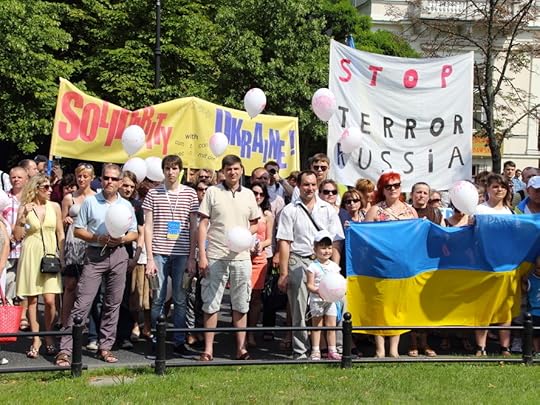 Europe and Central AsiaUkraineRussiaBelgiumUnited StatesUS
Europe and Central AsiaUkraineRussiaBelgiumUnited StatesUS
Alexander J. Motyl's Blog
- Alexander J. Motyl's profile
- 21 followers



